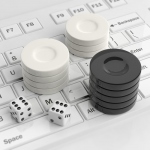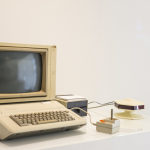No one reading this site needs a lecture on the importance of accessible web design. You are already there. But from time to time, we all need to be reminded of why backing up our work is so important.
There is a good chance you have some type of backup solution in place, even if it is not very good. This is just a quick audit to be sure that you are using best practices when it comes to protecting your hard work from accidental data loss. After doing all that hard work and confirming your checklist to be sure everything is in order, it would be a shame to lose it all when it could have been avoided. Here are a few tips:
Don’t Skimp on the Quality of Your Backup Drive
A lot of serious designers have very serious machines packed to the gills with the best of the best components money can buy. That includes the latest and greatest hard drive tech. Everyone knows that the hard drive is usually the first major component to go. They know better than to cheap out on that which holds their most valuable work.
Unfortunately, this enlightenment goes out of the window when it comes to backup drives. People will buy a $700 Drobo or Synology, and fill them with five or six of the cheapest, off-the-shelf drives they can find. They take the most advanced backup system they can afford and fill it with the weakest links they can find.
Once those drives fail, the next stop is a hard drive recovery service with the highest certification and regulatory clearance available, who can work on the latest HDD and SSD tech regardless of platform and formatting, just so they can get back to work in a timely manner.
Every designer needs to have such a service on speed-dial at all times because disaster can strike any drive at any time. But we can reduce our risk of having to resort to that by using the highest possible tech in our backup drives the same as we do for the primaries.
Take a Picture
When it comes to some elements of design work, a screenshot can be your best friend. You might think about keeping a folder on your desktop for taking screenshots of your project as it progresses over time.
While it would be awkward and annoying to have to try and re-input all your code from squinting at a screenshot, it is the perfect way to recall graphical and layout elements you have been working with. What exactly was your color scheme, paragraph style, and font choice? Were you using drop-shadows on your images or not? These are the kinds of things you may not remember if you are forced to reconstruct your designs.
Even if you don’t lose your work, you can easily lose the thread of your brilliant idea as it morphs over a lengthy and intricate project. Glancing through a pictorial diary of your work will help you stay consistent throughout the project. A screenshot gallery is no substitute for a good backup. But it is a nice addition for designers.
Encryption
While you are in the process of making a good backup, don’t forget to secure it with encryption. Just as with quality, it is easy to put all your security efforts into the primary data, while leaving the backups completely vulnerable to theft. It is like triple-locking the front door while leaving the backdoor wide open.
For Mac users, it is easy to find guides on how to encrypt a Time Machine drive. Various solutions abound for Windows machines as well. As a web designer, you are a higher profile target than most. If you are good at what you do, there is someone who wants to steal your work. Your backup is incomplete until you encrypt it.
No one sets out to lose all their work. It happens to the best of us. In addition to what you are already doing, add higher quality backup drives. Make periodic screenshots of your work. And encrypt everything.












Leave a Reply